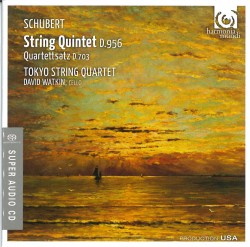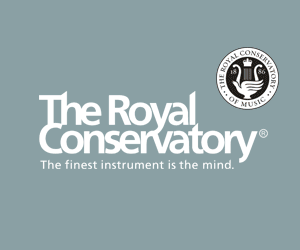 Schubert - String Quintet; Quartettsatz
Schubert - String Quintet; Quartettsatz
Tokyo String Quartet; David Watkin
Harmonia Mundi HUM8074227
At the age of 16, Schubert was drawn to the string quartet and in that period he composed several works in this genre. He abandoned the form three years later, perhaps feeling that his own writing did not match the drama and intensity of the giant figure of Beethoven (“Who can do anything after Beethoven?” Schubert once complained to a friend). With Quartettsatz (Quartet Movement) D703, Schubert chose to revisit the form and to do so in the key of c minor, a key Beethoven loved and often used. Schubert abandoned the score after having composed about 40 bars of a slow movement and the opening Allegro was not published until 40 years after his death. This movement is somewhat unorthodox in form – opening measures are not heard again until the end of the piece – and it contains many elements that Schubert will further develop in Death and the Maiden and his other masterpiece, the String Quintet in C Major. The Tokyo String Quartet, whose members play on “The Paganini Quartet,” a group of Stradivarius instruments named after Niccolo Paganini, had no trouble crossing between the tension and agitation of the first theme to a much warmer and more serene second subject. Their performance is full of sparkles yet it contains an astonishingly wide range of string textures.
Schubert died shortly after completing his String Quintet in C Major and the quintet remained unnoticed until 1850, when the famous Hellmesberger Quartet started to promote it three years before it was published for the first time. This piece is full of very powerful contrasts – light is followed by darkness, serenity is interrupted by drama, and the whole work seems to be a wonderful yet unsettling interaction between two very different worlds. Schubert emphasized the contrasting sonorities by his use of the instruments - the first violin and first cello are often paired and playing in octaves, inner voices tend to be restricted to their lower registers and the second cello often brings in the darker textures.
Cellist David Watkin (of the Eroica Quartet) has a wonderful rapport with the members of the Tokyo on this recording. There is a sense of effortless playing, a unity of ideas and the near perfect crispness in bow attacks. Two cellos bring up a very expressive sound in the second theme of the first movement and in the third theme in the fourth movement. Throughout the second movement, possibly the most beautiful and complex slow movement of all Schubert’s works, there are points of stillness and feelings of being suspended in time that are so rewarding for the listener. Martin Beaver‘s violin at times comes very close to the human voice. The third movement, with an almost overwhelming difference of character between the Scherzo and Trio, allows the Tokyo Quartet and David Watkin to display a virtuosity and depth of emotion at the same time. The fourth movement is played very stylishly; the dance-like quality is uplifting and the tempo, along with a feeling of exuberance, accelerates at the end before it brings the turbulence back in the last bar. A fluid and extremely satisfying performance!



